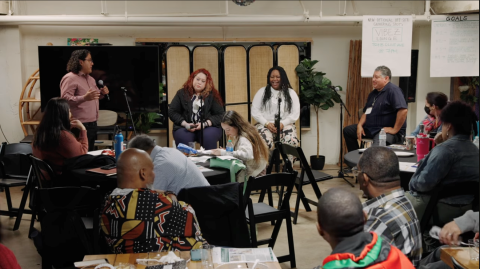It All Matters: Investing in the Whole of Northern California
"The impact of underinvestment has serious implications for civic participation, economic development, and the social and cultural fabrics that bring people together. The Central Valley’s ability to thrive – and, by extension, California’s – is directly tied to our willingness to engage, support and invest." - Dwayne S. Marsh
Sometimes a name only tells part of the story. When people hear that I lead Northern California Grantmakers, they often envision a membership that serves the greater Bay Area. It’s understandable, as people frequently use the two terms frequently, presuming that NCG is synonymous with Bay Area. It is not. To be clear, our 220 institutional and 4,000 individual members are distributed throughout and serve the 48 northernmost California counties, from Kern County to the Oregon border. This region is larger than any U.S. state, save Alaska and Texas, and its home to nearly 16 million people.
While San Francisco, the Silicon Valley, and surrounding jurisdictions have an overconcentration of power and resources, our interconnected ecosystem involves every county in our geography. Advancing philanthropic practice and improving outcomes for such a diverse range of foundations and the communities they serve is no small task. Many of our members support issues and populations beyond the nine-county Bay Area region, but the opportunity exists for greater engagement, investment, and action especially in underrepresented areas in California.
That breath of our reach includes regions such as Central Valley, true northern California, the Tahoe region, and the Central Coast. These areas, including the 12 counties with fewer than 40,000 residents within these regions, each contribute to the state’s vitality. There is a myriad of reasons why this is essential.
- In the counties hours north of the Bay – Humboldt, Trinity, Mendocino, Del Norte, and others – important breakthroughs are occurring in renewable energy and emergent indigenous leadership is making waves nationally.
- Despite its invaluable contribution to our national food system, California’s Central Valley remains largely invisible to much of the country. Yet, it is undeniably crucial for proving ground for public health, climate change, and democracy. The San Joaquin Valley alone covers 8 counties, has an area larger than West Virginia, is home to more than 4 million residents, and generates nearly $40 billion in agricultural revenue annually (you can learn more about the vital role of this region from NCG board member Priscilla Enriquez here).
- The state's Central Coast features the sprawling ecological and economic assets ranging from the Monterey Bay and Pacific Ocean to gorgeous expanses of protected and mixed-use forests, with fertile agricultural lands, culturally-rich communities, and small-scale manufacturing hubs. It’s a hotbed for public-private-philanthropic experiments that foster equitable local and regional economies.
Despite its importance, philanthropy has historically underinvested in these critical regions. Per capita support from federal agencies to the Valley is just three-quarters of the national average. Even more concerning, by some estimates, less than 6 percent of statewide philanthropic recourses flow to the Central Valley. As the housing crisis intensifies in the Bay Area, many communities of color and low-income communities are being displaced to more suburban and rural areas, into regions like the Central Valley. This influx has led to significant growth- ten counties experienced growth greater than 3 percent between census rounds despite declining California population statewide.
However, as populations shift, the infrastructure and services in these communities remain underfunded and undeveloped. For instance, nonprofits in the Valley are funded at only half the national average, leaving many communities unequipped to meet the growing needs of new arrivals. This has led to increasing suburban poverty, which is distributed in new ways across jurisdictional boundaries that shape governance outcomes in smaller cities and incorporated and unincorporated suburbs. These communities are often overlooked by public, private, and nonprofit organizations – and the philanthropy that needs to support them. We also know these areas are hubs of transformative organizing that we can continue to learn from and with as a region.
The impact of underinvestment has serious implications for civic participation, economic development, and the social and cultural fabrics that bring people together. The Central Valley’s ability to thrive – and, by extension, California’s – is directly tied to our willingness to engage, support and invest.
At NCG, we are using all of the available tools to attract more interest, energy, and investment into communities traditionally underrepresented by philanthropic engagement. We’ve been organizing more with and beyond our membership to bring attention to these regions. We’ve prioritized lifting examples from the entire geography of our membership footprint to the attention of the NCG community. We’re increasing our training and advocacy for public funding to reach communities on the ground with natural emphasis on some sub-regions in question. And we’ve brought representation from across the breadth of our region onto the board over the past two years, with representatives from the Central Valley and northern California.
Philanthropy must be more strategic in recognizing the full richness of what we mean when we say Northern California. Investing in these regions isn’t just a moral imperative; it’s a necessity for ensuring the long-term prosperity and resilience of California. Keep an eye out or more intentional actions in the coming months as we make the connection more natural for our members, ensuring every part of Northern California receives the attention and investment it deserves.




